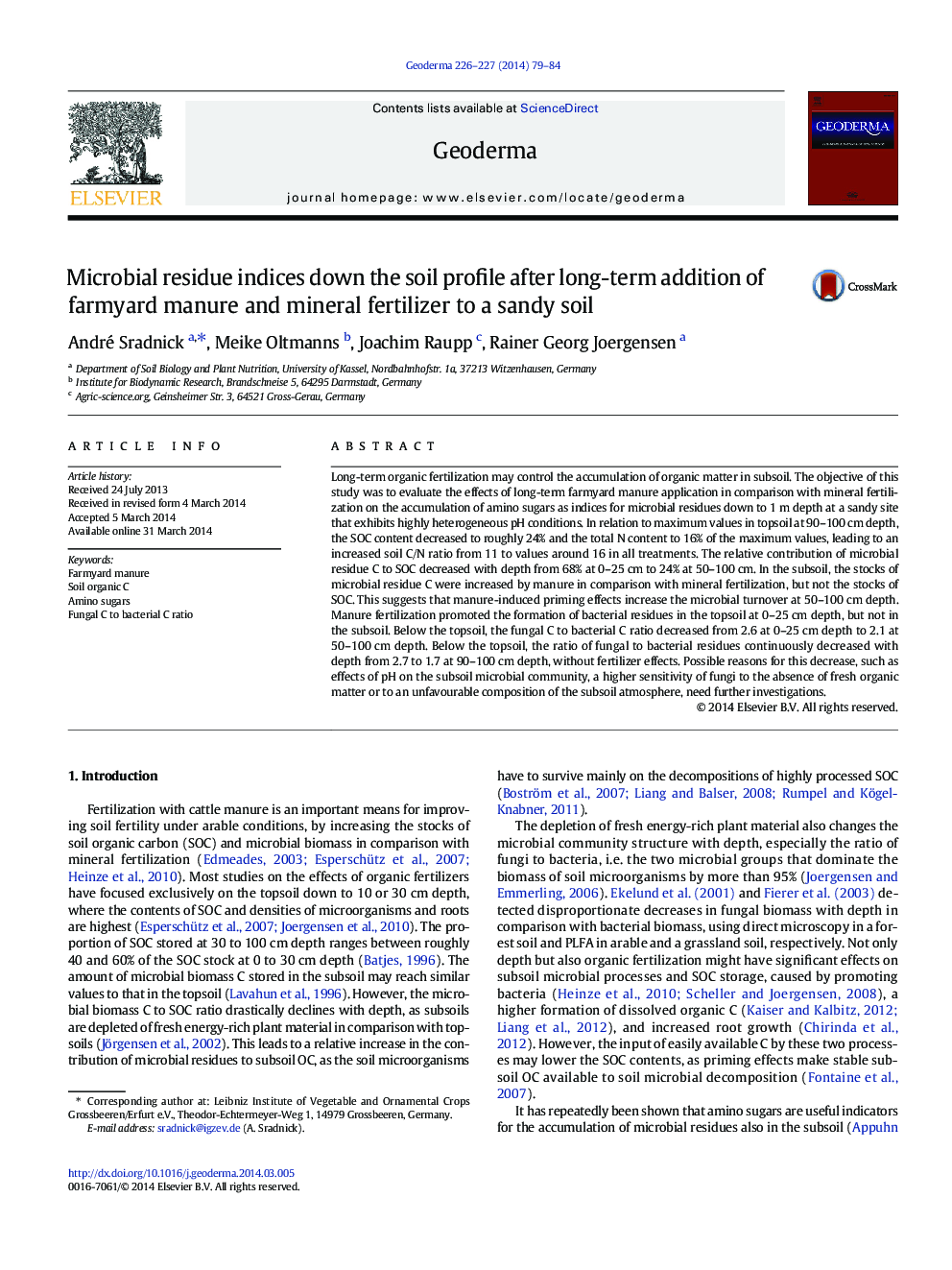| Article ID | Journal | Published Year | Pages | File Type |
|---|---|---|---|---|
| 6408844 | Geoderma | 2014 | 6 Pages |
Abstract
Long-term organic fertilization may control the accumulation of organic matter in subsoil. The objective of this study was to evaluate the effects of long-term farmyard manure application in comparison with mineral fertilization on the accumulation of amino sugars as indices for microbial residues down to 1Â m depth at a sandy site that exhibits highly heterogeneous pH conditions. In relation to maximum values in topsoil at 90-100Â cm depth, the SOC content decreased to roughly 24% and the total N content to 16% of the maximum values, leading to an increased soil C/N ratio from 11 to values around 16 in all treatments. The relative contribution of microbial residue C to SOC decreased with depth from 68% at 0-25Â cm to 24% at 50-100Â cm. In the subsoil, the stocks of microbial residue C were increased by manure in comparison with mineral fertilization, but not the stocks of SOC. This suggests that manure-induced priming effects increase the microbial turnover at 50-100Â cm depth. Manure fertilization promoted the formation of bacterial residues in the topsoil at 0-25Â cm depth, but not in the subsoil. Below the topsoil, the fungal C to bacterial C ratio decreased from 2.6 at 0-25Â cm depth to 2.1 at 50-100Â cm depth. Below the topsoil, the ratio of fungal to bacterial residues continuously decreased with depth from 2.7 to 1.7 at 90-100Â cm depth, without fertilizer effects. Possible reasons for this decrease, such as effects of pH on the subsoil microbial community, a higher sensitivity of fungi to the absence of fresh organic matter or to an unfavourable composition of the subsoil atmosphere, need further investigations.
Related Topics
Physical Sciences and Engineering
Earth and Planetary Sciences
Earth-Surface Processes
Authors
André Sradnick, Meike Oltmanns, Joachim Raupp, Rainer Georg Joergensen,
